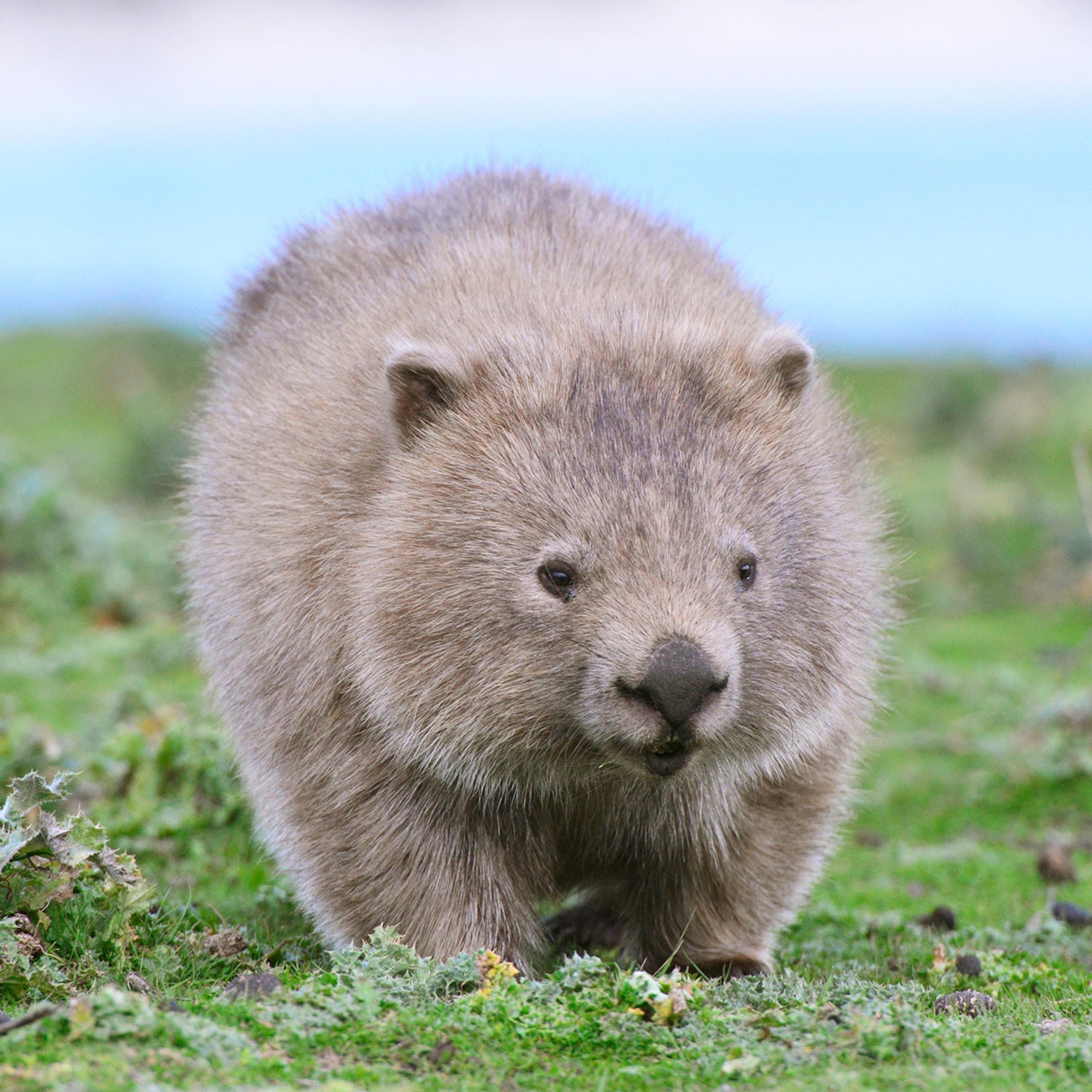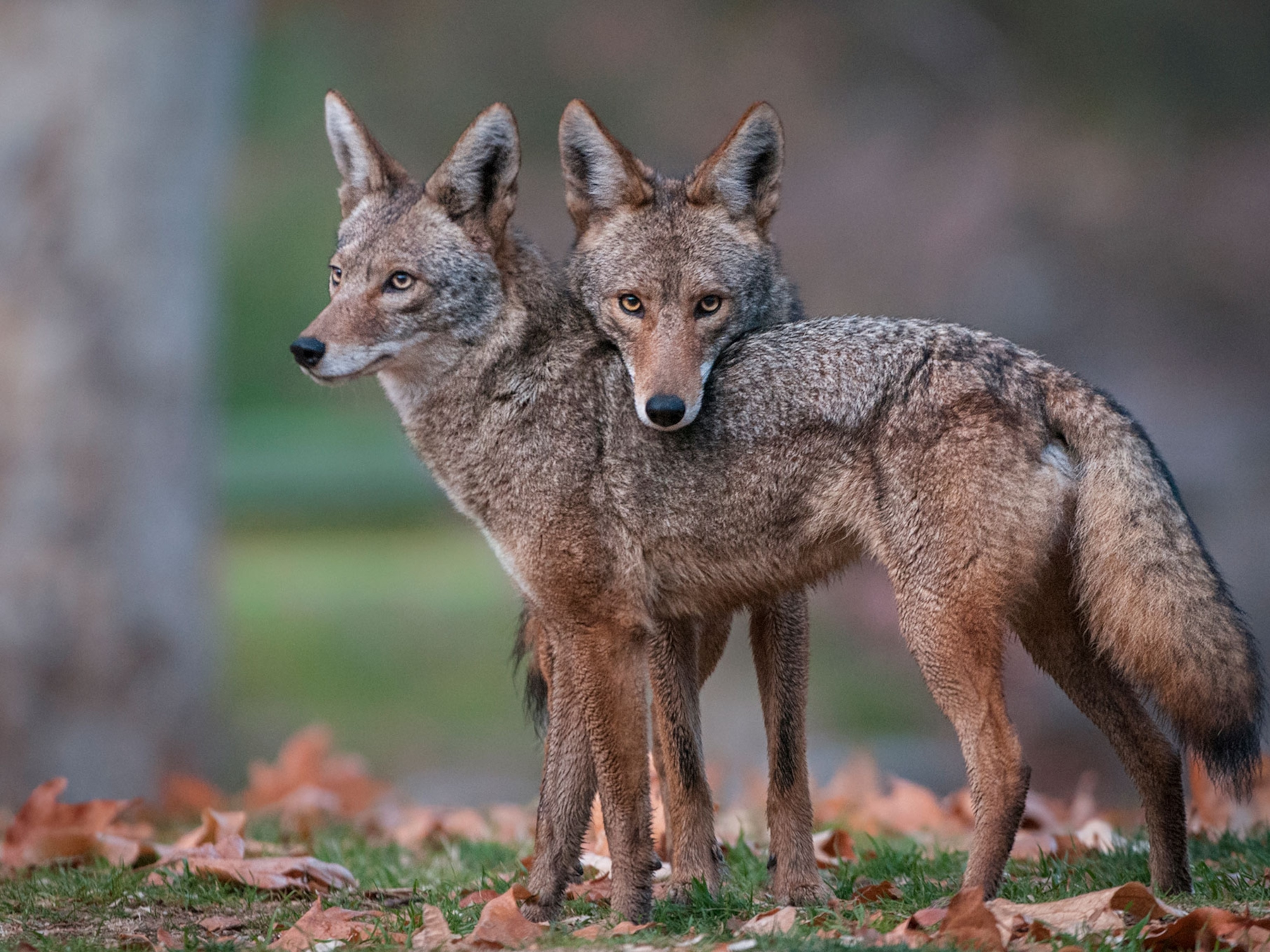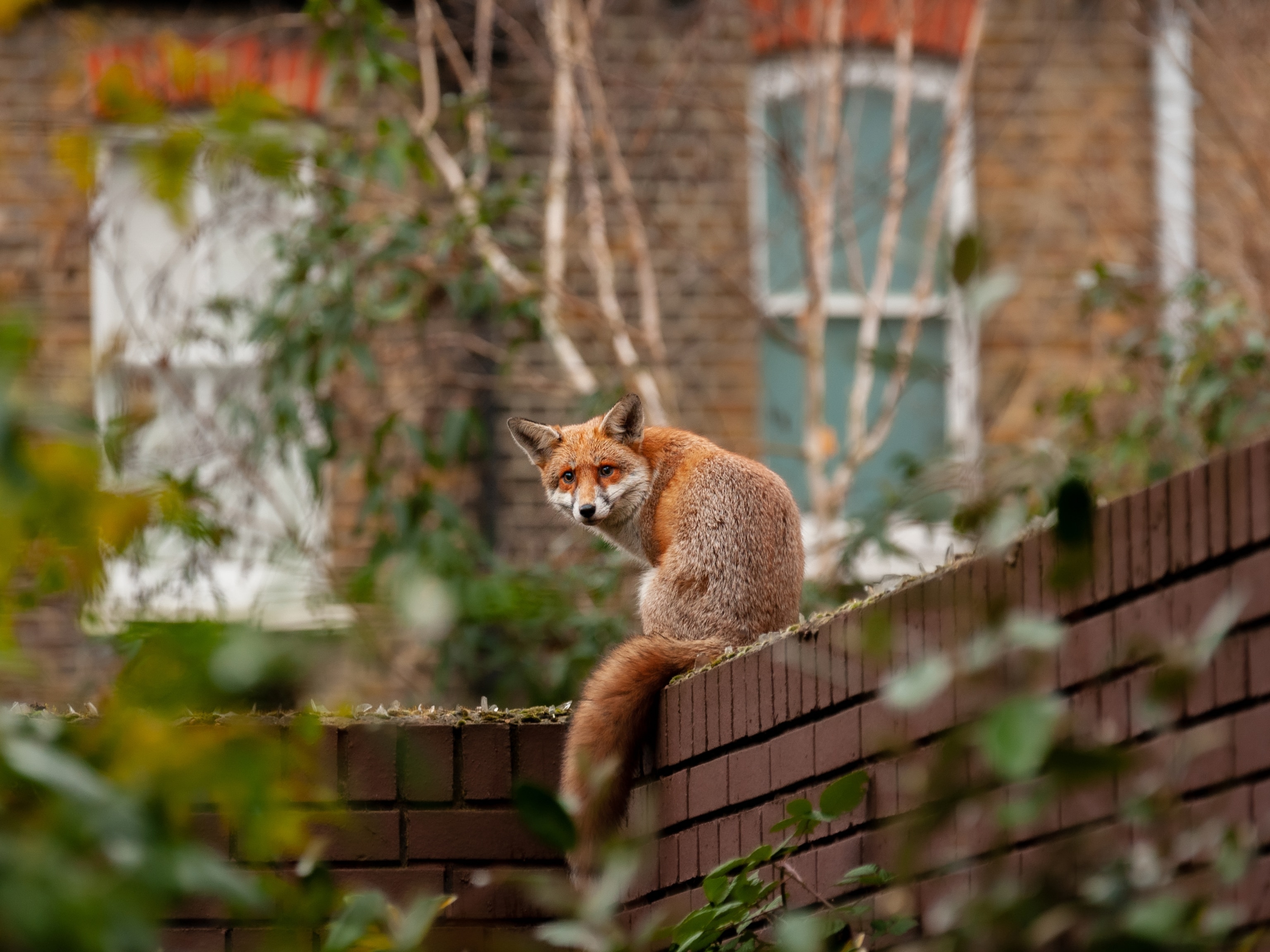
Wild animals are adapting to city life in surprisingly savvy ways
Why bears know when it’s trash day, coyotes learned to look both ways before crossing the street, and raccoons can untie bungee cords.
At first glance, it’s a scene that plays out daily in cities across America. A U.S. Postal Service carrier wearing a royal blue bucket hat steps out of his mail truck and strides across the street, letters in hand. That much is unremarkable. But this postman either doesn’t notice or doesn’t seem to care that a hefty American black bear (Ursus americanus), likely a young male, is sitting on his haunches a few yards away, vigorously scratching his shedding winter coat.
Immediately to the left, Interstate 240 roars behind a chain-link fence, apparently just white noise to the bruin, which eventually lopes down the sidewalk deeper into this neighborhood barely a half mile from downtown Asheville, North Carolina.

Along the highway, a team of researchers with the North Carolina Urban/Suburban Bear Study is captivated by another discovery: a deep hollow inside a gnarled silver maple tree. Bear N209, a radio-collared female that’s among more than a hundred bears being tracked in the study, hibernated there over the winter, despite the constant rush of vehicles mere feet away.
The project is now in its eighth year, and yet “these bears still surprise me,” Colleen Olfenbuttel, the state’s black bear and furbearer biologist, shouts over the din of traffic. She holds a ladder steady as a colleague scrambles inside the tree and measures the den. It’s the biggest tree den Olfenbuttel has seen in her 23 years of studying black bears. “They’re so much more adaptable than we give them credit for.”

Indeed, it’s hard to imagine that black bears would take so well to living in Asheville. In this progressive city of about 95,000 nestled in the Blue Ridge Mountains, bears shuffle down residential streets in broad daylight and clamber onto people’s decks and front porches. Some Ashevillians have embraced their ursine neighbors, and nearly every person you talk with has a video of their most recent bear encounter on their phone. (Read more about how wild animals are hacking life in the city.)
The advent of the city bear in Asheville and elsewhere stems from a combination of trends, including changes in land use and the tempting buffets available when living near people. These factors have boosted North America’s black bear population to nearly 800,000. At the same time, sprawling cities and suburbs have swallowed up large swaths of bear habitat, leaving the animals little choice but to adapt to living with human neighbors.
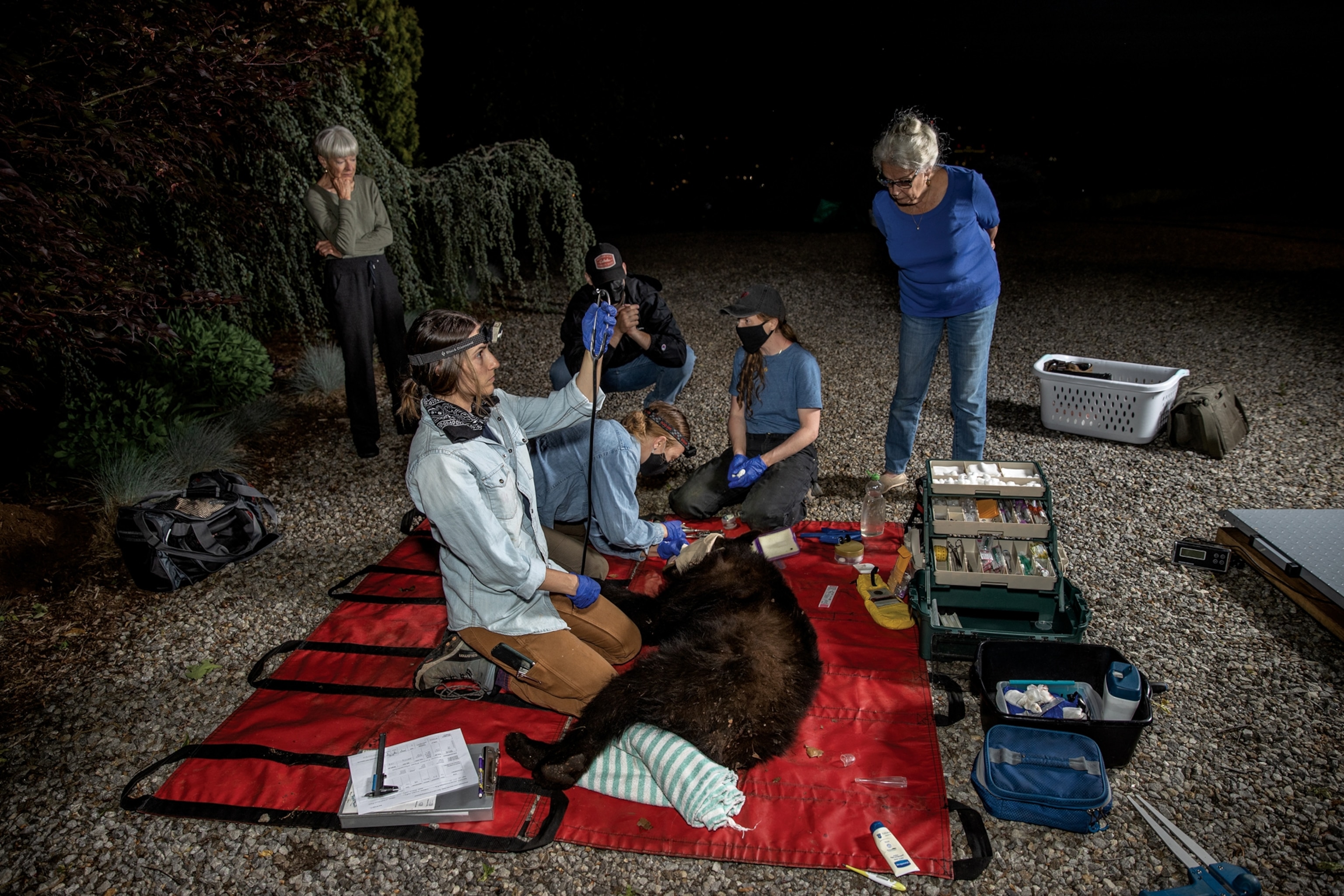
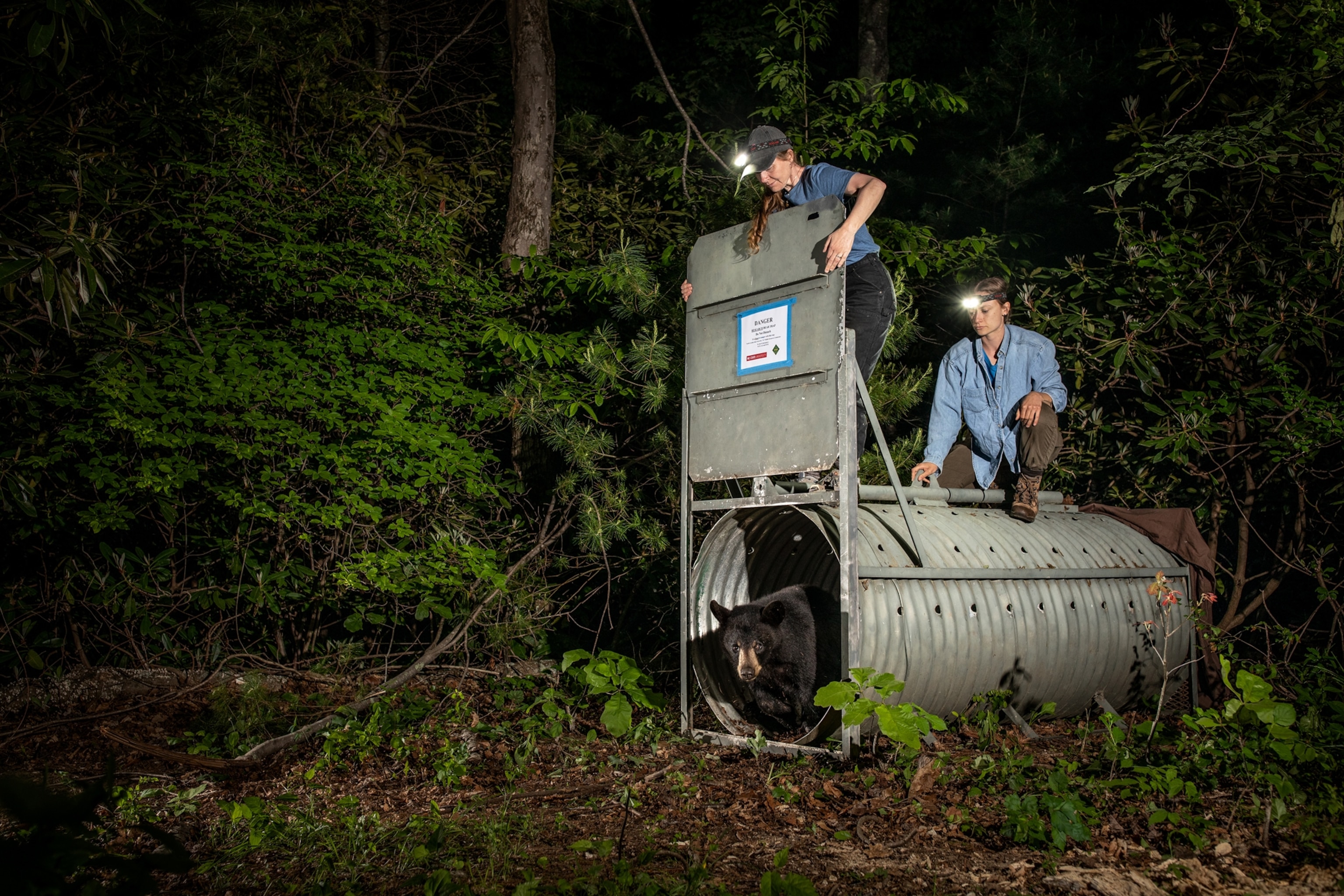
It’s a phenomenon happening in urban areas across the United States and around the world, and it’s not unique to black bears. Many mammals that eat a wide variety of foods are moving in and changing their behaviors as they learn urban survival skills.
As more scientists study the creatures right under our noses, a consistent message is emerging: Many species are adapting to urban life in unprecedented ways. Coyotes look before crossing a street. Black bears know when it’s trash day. Raccoons figure out how to yank bungee cords off trash cans.
In 2020 a review of 83 urban wildlife studies across six continents found that a whopping 93 percent of citified mammals behaved differently from their rural peers. Most of these animals—as diverse as European rabbits, wild boars, rhesus macaques, and beech martens—became active at night to avoid people. They also expanded their natural diets to include human foods and shrank their home ranges to much smaller areas. The more we understand the animals living in our midst, ecologists say, the better we can get along with these urban newcomers.

In a wooded area behind a strip of fast-food restaurants and hotels in Asheville, Jennifer Strules and two colleagues haul a culvert trap—a barrel-shaped steel cage that humanely captures black bears—into place near a hotel parking lot. They’re hoping to catch a mother bear with three cubs that lives in the area.
Strules, a fisheries, wildlife, and conservation biology Ph.D. student at North Carolina State University, opens a box of day-old baked goods—irresistible bait for an animal with a nose sharper than a bloodhound’s. The team smears cupcake frosting on the sides of the trap and tosses in some doughnuts and cinnamon rolls. Should their quarry get trapped, the scientists would anesthetize the mother bear, which had been captured once before, and replace its radio collar.
Data collected from more than a hundred radio-collared bears during the first phase of the Urban/Suburban Bear Study, led by wildlife biologist Nicholas Gould, revealed intriguing differences between urban and rural bruins. Female city bears aged a year to a year and a half old weighed nearly twice as much as their country counterparts. Some two-year-old urban females produced cubs, but none of the rural bears of the same age reproduced. However, 40 percent of the city bears died during the four-year study, with vehicle strikes the leading cause. At this stage, researchers say, it’s unclear whether city living is a boon or a bust for Asheville’s bears.
Other studies paint a less ambiguous picture. Like the bears in Asheville, urban bears in Durango and Aspen, Colorado, as well as in Lake Tahoe, Nevada, weigh more and have more cubs, but their young rarely survive, resulting in net population declines. Seeing fat bears with a bunch of cubs may give the impression that urban growth and suburban sprawl benefit the animals, but the reality is different.
Neither is it true that humans and bears always live in harmony—even in open-minded Asheville, where bears have killed pets and injured at least one person in recent years.


In 2020 a mother bear defending her cubs attacked Valerie Patenotte’s dog, which later died. “We understand everyone has to coexist,” says Patenotte as we stand on her back deck overlooking the distant mountains. “We just want more space from bears.”
As if on cue, a bear family appears below us. One cub climbs a tree; another scampers about its hulking mother, which watches us warily.
To learn how residents can safely coexist with their untamed neighbors, Strules is planning an experiment. Two neighborhoods will be the focus of an educational campaign about BearWise, a soon-to-be-nationwide initiative that encourages bear-conscious practices such as keeping pets leashed, securing garbage, removing bird feeders, and not approaching or feeding the animals. Two other neighborhoods will receive no educational material and serve as experiment controls.
By tracking radio-collared bears in all four neighborhoods, Strules hopes to learn whether promoting the BearWise best practices changes residents’ behavior and reduces the number of nuisance reports. In Durango, researchers went a step further and distributed more than a thousand bear-resistant trash cans. Homes that used the receptacles experienced a 60 percent drop in problem encounters.
But some people want bears in their backyards—and none more so than Janice Husebo, who considers them part of her family. For 22 years she’s attracted hungry bruins onto the deck of her home northeast of downtown Asheville, where they help themselves to bowls of birdseed.
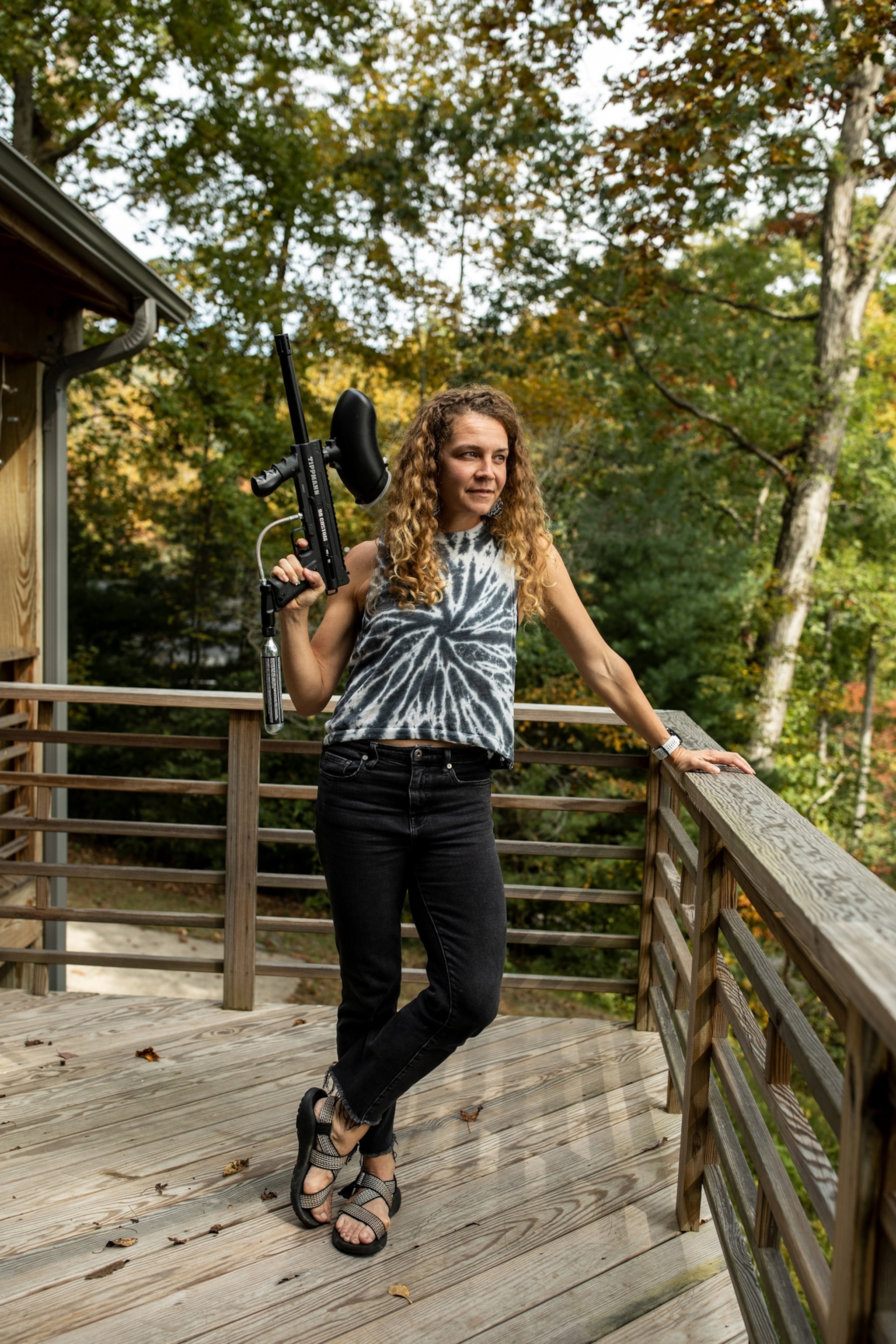
“I’ve got friends calling me the bear whisperer,” Husebo says as we huddle at her door, watching a mother bear and her twin cubs amble around the porch. “For her to lay here and nurse her cub while I’m talking to her … ” she says, her voice trailing off with emotion.
But wildlife officials warn that feeding bears increases conflicts and risk of injury, which decreases tolerance for the animals—two reasons a local county ordinance prohibits the practice. Strules, who recognizes bears’ beloved status among Asheville residents like Husebo, hopes her research will offer guidance on the best way to live with the animals—both for them and for us. “Wildlife belongs to everyone,” Strules says, “but we want to keep bears wild.”
While black bears have reclaimed about half their former range and now live in some 40 states, coyotes—native to the Great Plains—have taken the U.S. by storm in recent decades. They now can be found in every state except Hawaii and most major cities. The metropolis most synonymous with the urban coyote is Chicago, home to as many as 4,000 of the animals.
Stan Gehrt, a wildlife ecologist with Ohio State University and the Max McGraw Wildlife Foundation, began studying Chicago’s coyotes in 2000, not long after the animals started showing up there. Back then, Gehrt thought his project would last a year. More than two decades later, he’s still at it. “We consistently underestimate this animal and its ability to adjust and adapt,” Gehrt says. “They push the boundaries of what we perceive to be constraints.”


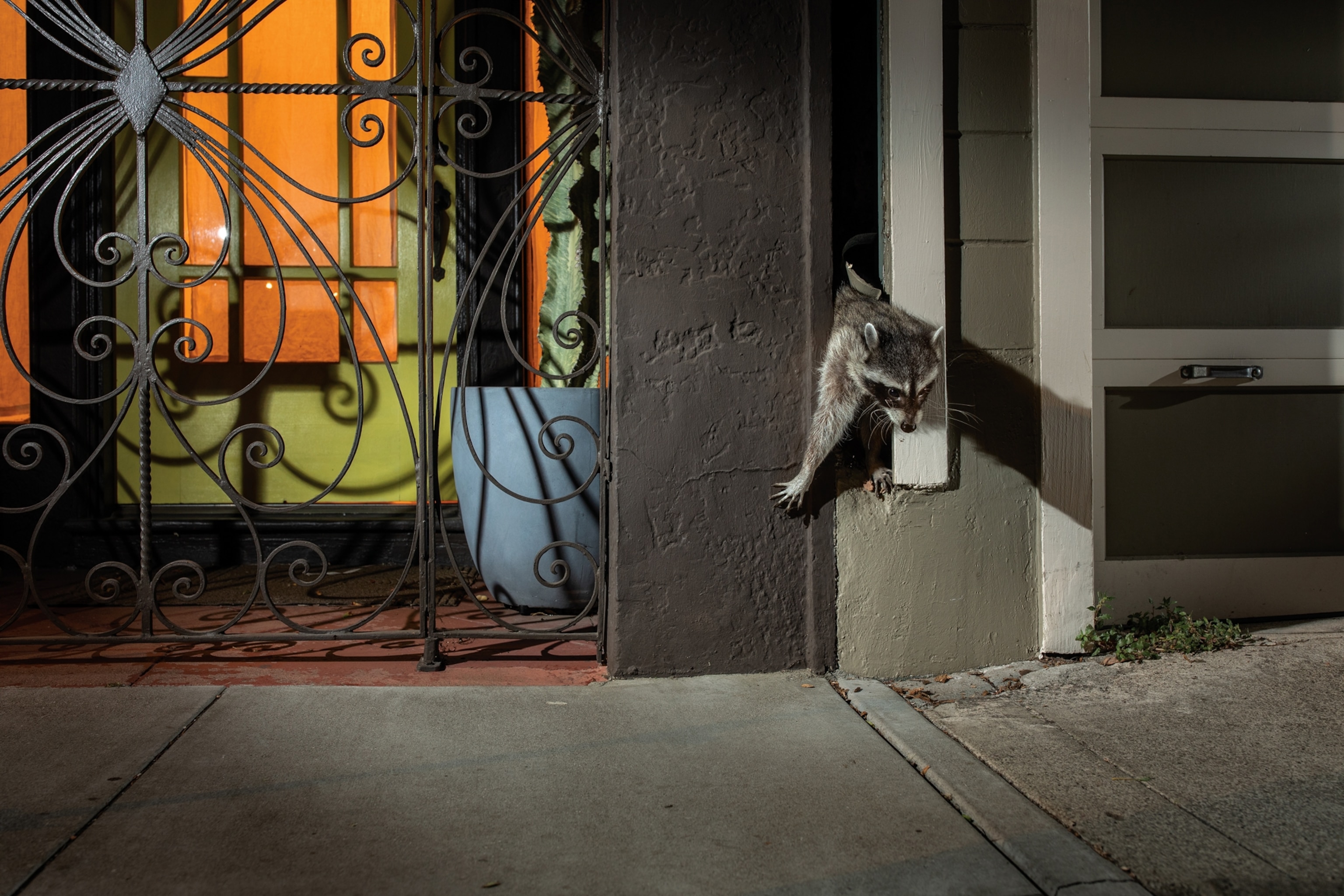
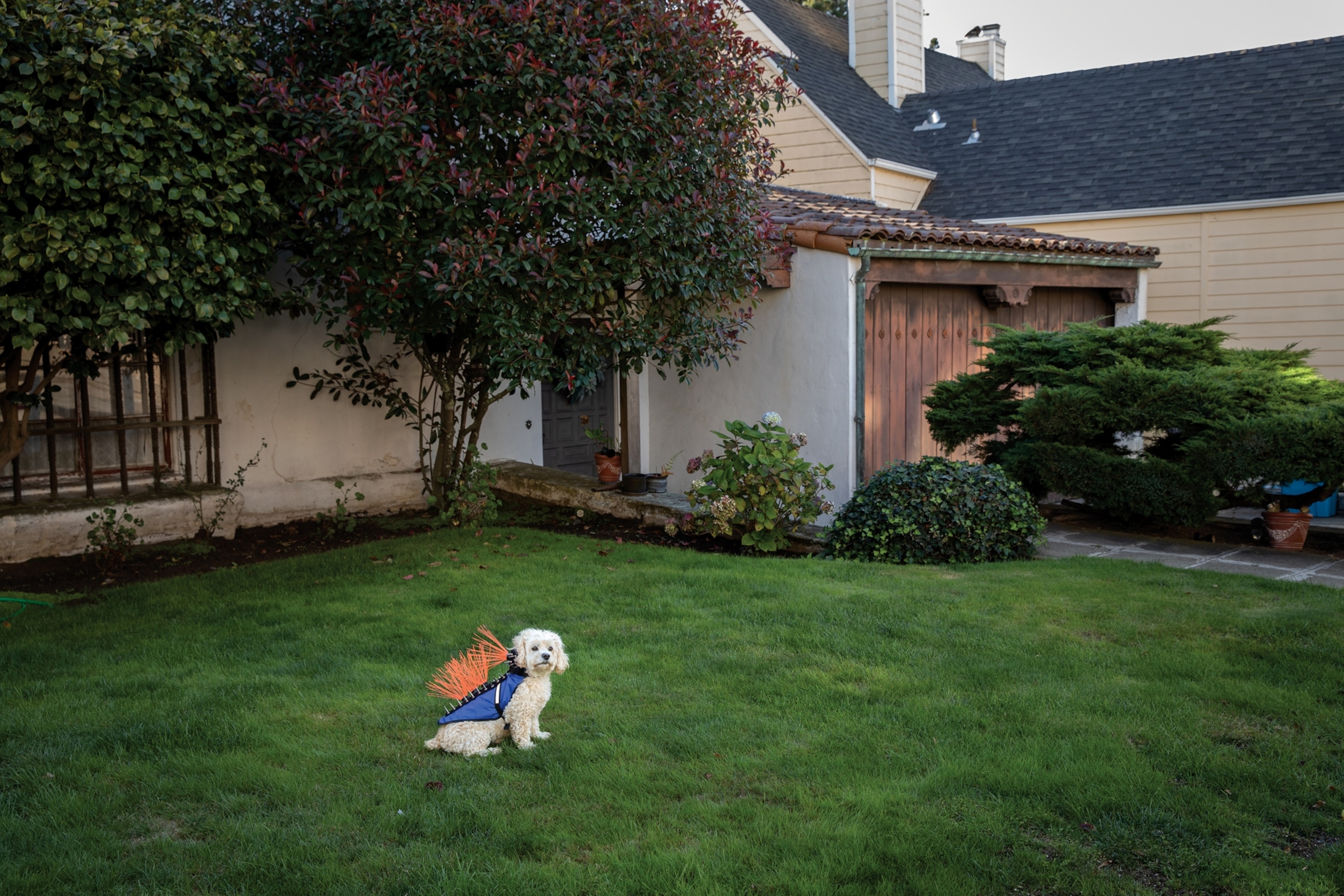
On a spring morning in the Chicago suburb of Schaumburg, three researchers trudge through marshy land behind a housing subdivision. They’re looking for the den and pups of coyote 581, a radio-collared female. Suddenly, a pup’s squeal pierces the hum of highway traffic. The group scatters, crashing through cattails and peeking into hillside burrows.
Moments later, senior field technician Lauren Ross shouts. She’s found a weeks-old pup sitting in the tall grass, its pale belly still swollen with his mother’s milk. Ross gently lifts the young male and examines him, pulling a tuft of hair for genetic analysis and inserting a small microchip called a pit tag between his shoulder blades. The plump little pup is quiet and still during the exam. The mother will return for him once the team is gone, Ross says.
At the beginning of Gehrt’s research, he thought coyotes would be restricted to parks and green spaces, but he was wrong. “Now we have coyotes everywhere—every neighborhood, every suburban city, and downtown.”
Indeed, coyotes have succeeded despite our best efforts to eradicate them. At least 400,000 are killed each year, about 80,000 by a federal predator control program primarily out West. Vehicle strikes are the main cause of death for Chicago’s coyotes, but the animals have learned to avoid cars and can even read stoplights. (Go inside the secret lives of Chicago’s predator.)
Adding to their adaptability is their flexible diet. Coyotes will eat just about anything, from shoe leather to fruit (they can climb fruit trees). It stands to reason that coyotes living in green spaces throughout the metropolitan area would eat mostly natural foods, such as rabbits and rodents, and those living downtown would rely on food derived from humans, including trash and domestic pets. But that’s often not the case, says Gehrt. “Variability is the primary pattern.”
Coyotes have a talent for scratching out a living pretty much anywhere. But are they genetically built for life as urbanites, or are they quickly adapting, in their classic wily fashion?
It could be a mix—what Christopher Schell, an urban ecologist at the University of California, Berkeley, calls adaptive plasticity. That is, coyotes could be taking advantage of their inherent ability to adjust to new environments while becoming better at living in them over time.
“Coyotes are like an AI system, learning faster than humans created it and taking over the world,” Schell jokes.
Schell and Julie Young, a wildlife biologist with the U.S. Department of Agriculture, are studying how various diets given to captive coyotes at the National Wildlife Research Center in Millville, Utah, could change the animals’ behavior. For example, they’ll compare a group of coyotes eating a simulated urban diet—high in carbs and sugar—with those eating a more natural, high-protein diet. Their hypothesis is that the coyotes eating human food will become bolder around people, which is supported by some anecdotal evidence.
“We’re following the age-old adage ‘You are what you eat,’ ” Schell says. He and Young theorize that a coyote that eats processed cereal, for instance, will be hungrier and looking for food much more frequently than one that eats a rabbit for breakfast. Though Gehrt has not found such a connection in Chicago coyotes, he notes that a reliance on human food does lead to more conflict with people and their pets by reducing the canines’ fear of people. In some places, such as Southern California, 38 percent of urban coyotes’ diets consist of human food sources.

Like coyotes and bears, raccoons are expanding throughout North American cities. In Washington, D.C., wildlife researchers Kate Ritzel and Travis Gallo wanted to find out whether raccoons living in the city are bolder and more willing to take risks than those in rural areas. They measured this by observing a raccoon’s readiness to investigate an unfamiliar object—in this case, bait buried inside a square of wooden stakes. The researchers installed more than a hundred automatic cameras throughout the city and rural areas of neighboring Virginia.
On a muggy September morning at Fort Totten, a federally owned Civil War–era facility, Gallo placed the smelly bait—“dead animals in a jar,” he called it—while Ritzel strapped a camera to a nearby tree. She would come back in two weeks to see which animals had passed through. She showed me her favorite video so far: a feisty raccoon chasing off a fox. (See how urban raccoons can escape trash cans.)
Months later Ritzel’s data indicated that urban raccoons are more exploratory than their country cousins, taking more time to investigate the squares. City animals also are more social, traveling in pairs more often than their rural, more territorial counterparts—suggesting that urban raccoons are adapting their behavior to city life. The next goal is to “suss out if there are any evolutionary changes” under way, Ritzel says.
When zoologist Sarah Benson-Amram first started looking into raccoon behavior and cognition about a decade ago, she figured such a common species would have been studied thoroughly. After all, the bushy-tailed omnivores are pop culture icons, jokingly dubbed trash pandas. Instead, Benson-Amram was shocked to find almost nothing in the scientific literature. A few researchers in the early 1900s had tried to study the clever animals but gave up when their subjects kept breaking out of their cages.
So far, she says, her research has confirmed the raccoon’s crafty reputation. In an experiment called reversal learning, she presented raccoons, coyotes, and skunks with a box equipped with a button or foot pedal that, when pressed, releases food. After the animals figured out how to get the food, the researchers would switch the buttons and pedals, forcing them to tweak their strategy. Most of the raccoons solved the problem on the first night, while only one of six coyotes engaged with the box—and not until the 44th night of testing. Once the coyote was comfortable engaging with the object, it could win the prize just as well as the raccoons and skunks. (Read how raccoons passed a famous intelligence test—by upending it.)

Urban coyotes have a different survival strategy from raccoons, says Benson-Amram, now at the University of British Columbia in Vancouver. “They’re successful by avoiding humans, rather than exploiting them.”
Benson-Amram’s study bolsters the theory that some urban mammals rely on their cognitive abilities to adapt to city life and that when they’re presented with an obstacle, they can innovate on the spot. (Read National Geographic's series on urban wildlife, “Wild Cities.”)
Kelly Lambert, a behavioral neuroscientist at the University of Richmond, has compared the brains of captive raccoons known to be problem solvers with those that were deemed less innovative. She found that the innovators have more specialized nerve cells in their hippocampus, a center of learning and memory. “That kind of blew my mind,” says Lambert, whose research has also found that raccoon brains are more like primates’ than any other species. But as is the case with coyotes and many other urban animals, more studies are needed to determine if raccoons are evolving to be smarter.
Still, Benson-Amram is intrigued that our attempts to deter raccoons may be fueling an innovation arms race. “It’s possible we’re actually creating smarter animals,” she says, “because we’re presenting them with increasingly difficult problems to solve.”

Until recently, urban wildlife was mostly ignored in scientific research. This is partly because such species are considered pests unworthy of our attention—or not wildlife at all.
“We live on a planet that’s rapidly urbanizing, and it’s silly for us to say, Oh, we don’t care about animals in urban landscapes,” says Seth Magle, director of the Urban Wildlife Institute at Chicago’s Lincoln Park Zoo. “Whether we like it or not, we live with wildlife.”
While much of urban ecology focuses on how to minimize conflicts, we forget that our experiences with wildlife often are delightful, Magle says. “Another part of coexisting with animals has to do with celebrating these moments.” (See more photos of urban wildlife.)
My moment came on a summer morning in Washington, D.C.’s Rock Creek Park Golf Course. I was walking the hilly back nine with a group of biologists, looking for coyote scat, or droppings. As we reached the top of a hill, we were startled to see a coyote and pup standing below us. We gazed at each other in mutual surprise. The adult coyote, its back golden in the sun, remained motionless while the pup pranced around. A few seconds later, the adult quietly slipped into the nearby woods, the little one hanging back for a last look before disappearing into the shadows.
This story appears in the July 2022 issue of National Geographic magazine.



